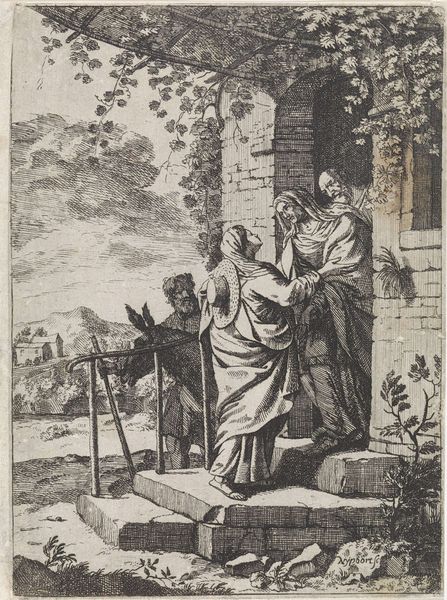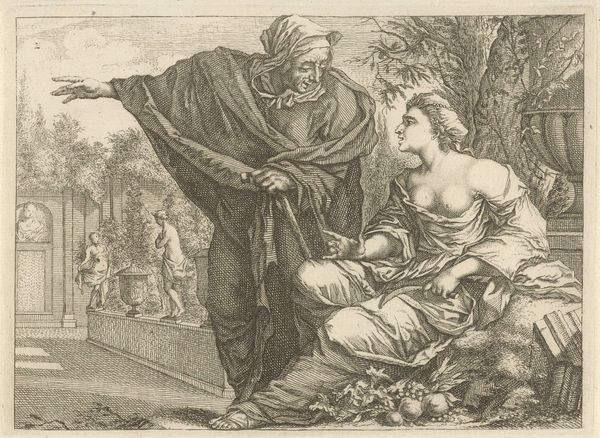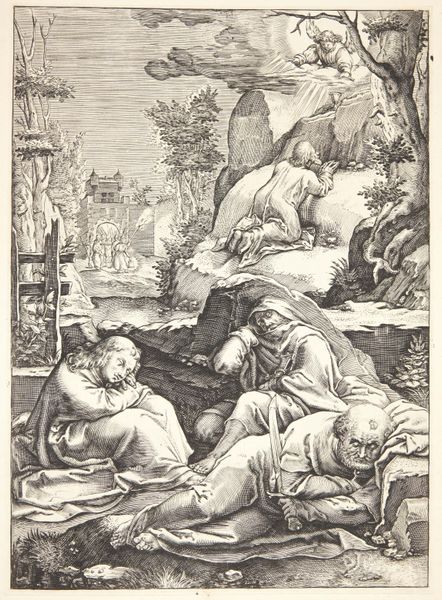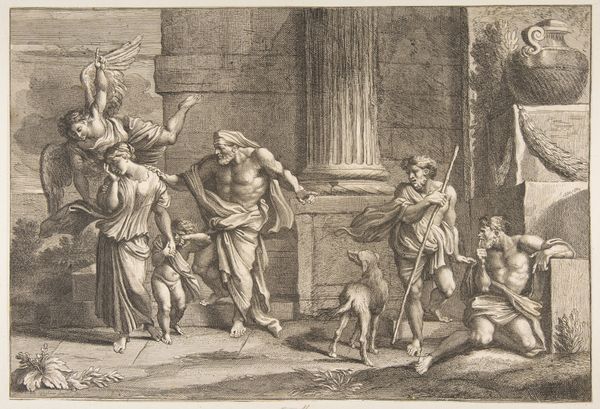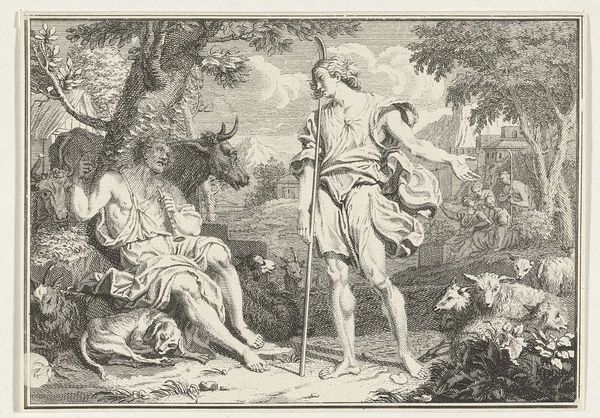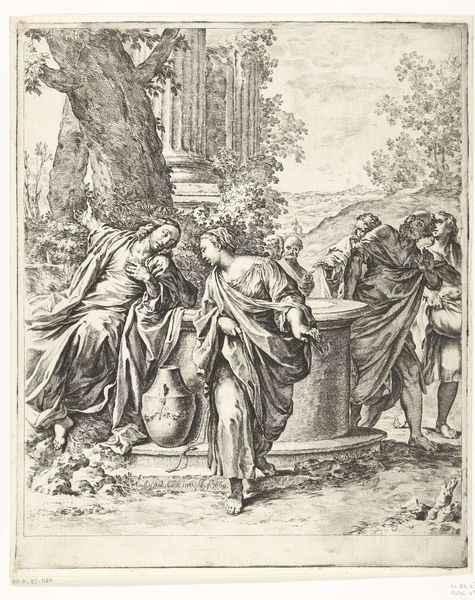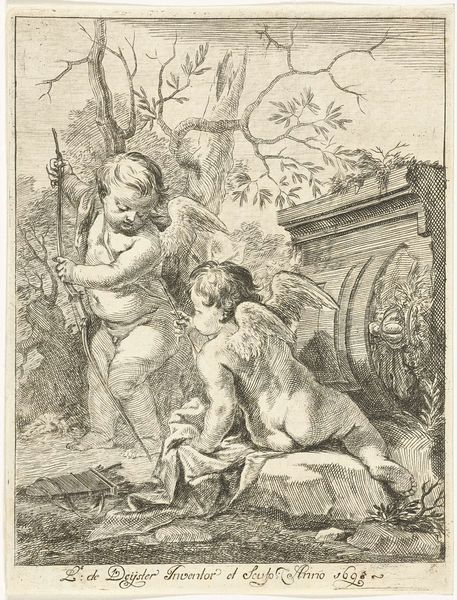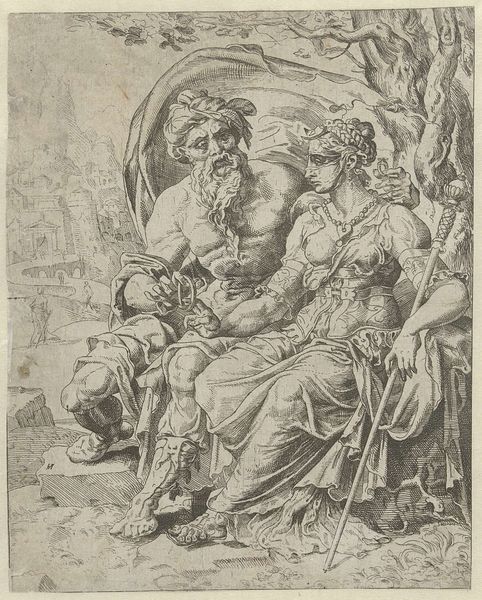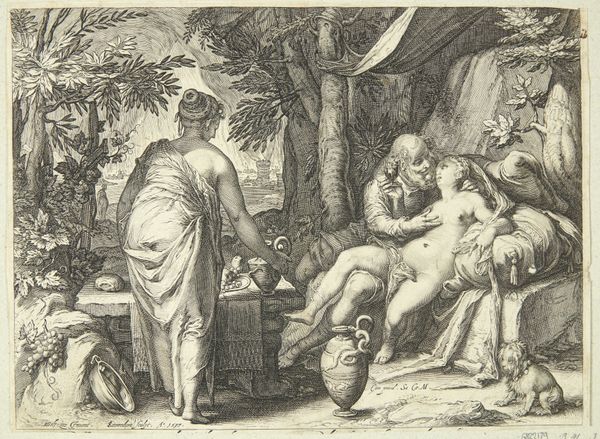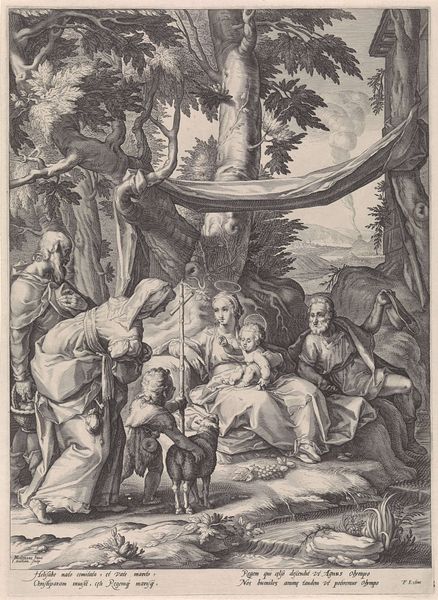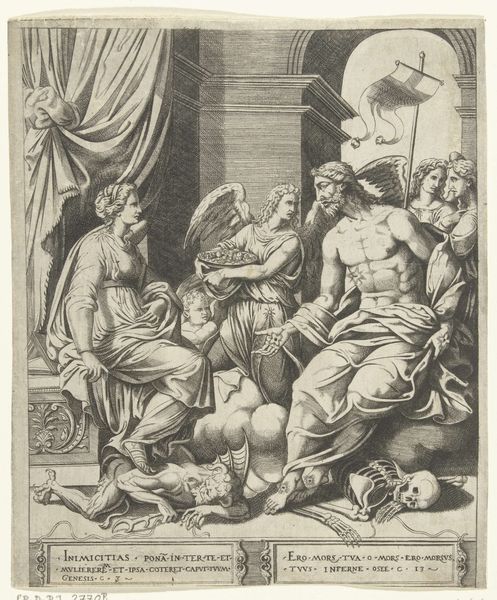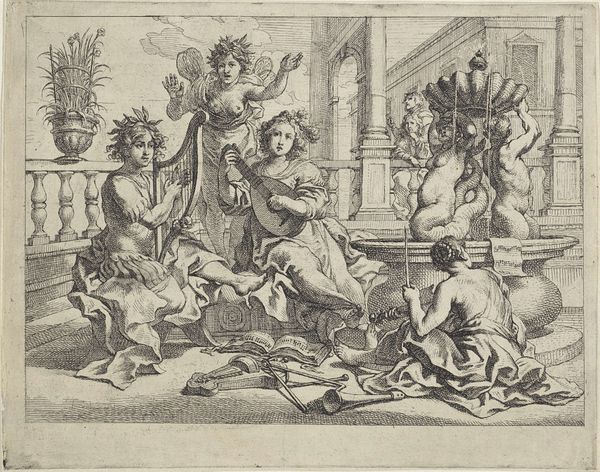
print, etching
#
baroque
# print
#
etching
#
figuration
#
genre-painting
#
history-painting
#
nude
Dimensions: height 149 mm, width 221 mm
Copyright: Rijks Museum: Open Domain
Curator: This etching, dating roughly from 1635 to 1670, is attributed to Daniel van den Dyck. The piece, executed in the Baroque style, depicts Suzanna and the Elders. Its lines feel charged. Editor: Absolutely! The initial impact is quite disturbing; a definite air of entrapment and violated personal space hangs heavy over the scene. The contrast is powerful, like an outcry captured in ink. Curator: Note how the artist has rendered the texture. The lines coalesce to delineate figures, fabric, and foliage. The column to the left stabilizes the composition, in sharp contrast to the anxious, unsettled Susanna. Editor: The way her gaze evades the viewer also implicates *us* in the spectacle of her violation, making our position uncomfortable. And isn't this one of art history’s more prevalent storylines: the older male gaze meets female youth and vulnerability? Curator: You're referencing, of course, its enduring representation in Western art… but structurally speaking, consider the composition itself. Note the elder on the left looming over her, compared to the other, further back, whose perspective implicates a building. Editor: Implicates privilege and power, literally enshrined! These voyeurs occupy and pervert the landscape, exploiting their societal positions to dominate Susanna, an act that clearly underscores power dynamics in seventeenth-century life, wouldn't you agree? Curator: Certainly the interplay of gazes conveys an uncomfortable narrative. Editor: Ultimately, this print’s stark portrayal of female exploitation challenges us to acknowledge the historic—and continued—objectification of women, doesn’t it? Curator: Yes. It lays bare that such narratives endure and can be recognized and countered through vigilance and advocacy. Editor: Thank you for directing our eye, enabling us to think deeper. Curator: Indeed, may such insights compel dialogue, as these historical prints also serve as critical reflections of current injustices.
Comments
No comments
Be the first to comment and join the conversation on the ultimate creative platform.
